Fly fishing. Road trip. Montana.
Sounds pretty reasonable, right? There’s something inherently intriguing about the idea of packing your gear, jumping in your rig, and heading out on the road to fish some of the best water in the Lower 48. I’m penciling in Montana as your destination, as the Big Sky state has the best wild trout fishing around ... but feel free to substitute Idaho, Wyoming, or Colorado if the spirit moves you.
In any case, I’m fortunate enough to have 30+ years of Rocky Mountain road trips in the rear view mirror, and I wanted to offer a few suggestions for those of you who are thinking about getting out on the highway this spring or summer. With that in mind, here’s an essential gear list that features stuff I can personally vouch for.
Your Ride
Trucks with caps or SUVs are the way to go. Good tires and 4WD are vital. I’m partial to my 2000 Toyota Tundra, but there are a bunch of different ways to roll.
Your Room
You can sleep in your rig if there’s enough space, or you can stay in motels - there’s definitely something to be said for hot showers and flush toilets - or, if you’re an adventurous sort, you can tent it. In any case, make sure you have a plan in place before you leave home.
Your Sleeping Bag
Regardless of your lodging arrangements, bring a sleeping bag. I have several, but my favorite is the Mystic UL 15 down bag from Big Agnes. It’s a little spendy, but it’s a great bag; lightweight and warm, very comfortable, and it takes up half the space of your typical sleeping bag.
Your Other Bags
Choices abound, but I’m partial to Patagonia’s exceptional Black Hole Bags and Fishpond’s Westwater Rolling Duffel.
Your Cooler
If you’re heading for the horizon, you probably want to haul along a decent cooler. Can you say “Yeti Tundra?”
Your Water Bottle
Stainless is painless, and Klean Kanteen’s 27 oz. widemouth stainless steel bottle is excellent, as is the new FreeFlow AutoSeal series of vacuum insulated stainless bottles from Avex.

Your Coffee Cup
The Yeti Rambler is an excellent choice for keeping your favorite beverage warm.
Your Water Filter
Giardia sucks. Don’t take chances. You’ll want an excellent water filter. The Katadyn Pocket is the gold standard.
Your Flashlight
The Fenix rechargeable RC20 is a hellaciously good light that’s also incredibly versatile. The little Fenix CL20 camping light will illuminate your tent, your tailgate or the backcountry campfire where you’re enjoying a cold beer and cooking up your last can of Dinty Moore beef stew. Seriously, don’t skimp on your lights.
Your Bear Spray
Pick up a can of Counter Assault or UDAP. Just don’t pull the trigger in your rig.
Your Multi-Tool
Word on the street is that a company called Leatherman makes killer multi- tools. I’m partial to the Skeletool CX, but you have lots of different options.
Your Jacket
You need something warm enough for cool-to-cold temps, but light enough and versatile enough to be comfortable whether you’re fishing or kicking back. Patagonia’s Nano-Air jacket is stellar, as is the Patagonia Nano-Puff pullover. Either one will do the trick.

Your Rain Jacket
Better not skimp here. I’d look at Patagonia’s River Salt or the Slick Jacket from Simms. Both are bulletproof.
Your Hat
Bring two, one with a brim and one that will cover your ears on chilly mornings. If you want great visuals, pick up a TroutHunter cap with the osprey logo.
Your Socks
Folks who don’t know better might laugh, but good socks are essential to any extended fishing trip. I’m partial to merino wool. Four pairs of Filson’s Heavyweight Merino Wool socks sounds just about right - they’re truly incredible - but no one will mind if you decide to go with Smart Wool, Orvis or Teko instead.
Your Shades
Classic aviators like the Wingman from Costa - palladium frames; 580G copper lenses - will help you fish, and travel, in style. Editor's note: if you want to take an even deeper dive into what shades to pack, check out our picks for the best fishing sunglasses.
Your Waders
I’ve had excellent luck with Simms G4s, Orvis Silver Sonic Zippered, and Redington SonicDry Fly, but my absolute favorite is the zippered Patagonia Rio Gallegos. They’re pricey, but a great investment. What’s that? You’re young and hard-core, and you don’t need waders? Well, enjoy the magic hour right before dark. Just keep in mind that the temperature can drop 30 degrees after the sun goes off the water, and it’s no fun wondering whether ice crystals are starting to form in your shorts ...
Your Wading Boots
The Orvis Access is my new go-to boot - it’s light, super comfortable, and stable - but you can’t go wrong with the Simms G3 Guide Boot or the Devil’s Canyon from Korkers. (Please leave your vintage ‘Chuck Taylors’ with the glued-on astro turf at home.)
Your Sling Pack
I’ll throw out four different choices here. The new Fishpond Thunderhead Sling is a great waterproof pack for the early/rainy season. Patagonia’s Stealth Atom Sling is small, but extremely well-designed. The Orvis Safe Passage Guide Sling is comfortable and will easily hold an elephant and two young water buffalo. The new Simms Waypoints Sling Pack (Large) is super versatile and functional. I’ve used all four, and they’re all really solid choices - it’s just a matter of which one suites your style of fishing.
Your Rod
Sorry, but one probably won’t cut it. My suggestion is to bring three - a 9’ 5-weight for most situations, a backup 9’ 5-weight for when your first rod breaks, and a 9’ 4-weight for fishing small dry flies when the wind dies down.
Rod #1 - Choices, choices ... I guess I’d flip a coin and try to decide between an over- lined 9 for 4 Orvis H2 (I love this 4-weight with a 5-weight line), a 9’ 5-weight Winston BIII LS (pure sweetness in a fly rod), a new 9 for 5 Sage MOD (it’s been overused, but the description that best fits is “epic”), and a 9’ 5-weight G Loomis NRX LP. They’re all exceptional rods, and at the end of the day it’s simply a matter of taste.
Rod #2 - Pick one of the rods that you didn’t pick for #1.
Rod #3 - Let’s go old school and dig around the web for a 3-piece, 9’ 4-weight Winston WT, which may be the single finest mass-produced 4-weight ever. Although you should also give serious consideration to the 8’9” 4-weight Sage Circa, and the new 9’ 4-weight Aeros from Thomas & Thomas.
Your Reel
Maybe I’m a sucker for symmetry, but if you’re going to bring 3 rods, you probably ought to bring 3 reels as well. Here’s how I’d roll.
Reel #1 - There are a number of great reels I haven’t fished, mostly because I’m awfully happy with the handful of Hatch reels I own. So let’s start out with a Hatch 4 Plus Finatic. Great design, great drag, and it will handle anything you can throw at it.
Reel #2 - The new Orvis Hydros SL III is carving out a niche as a solid, well-engineered, no-nonsense, take-no-prisoners fly reel - and it’s half the price of the Hatch.
Reel #3 - Let’s go a little further off the beaten path and grab a Bozeman Reel RS 325 for the 4-weight. It’s a sweetheart of a reel, and it’s made right here in Montana.
Your flies
Tie your own. Seriously, that’s the only way to go. Then, because you’ll never, ever have every single pattern you need, make a stop at the local fly shop to stock up. There are a ton of great shops, but two that I can personally recommend are Blue Ribbon Flies in West Yellowstone, Montana and TroutHunter in Island Park, Idaho.
So what did I leave out? Let’s see ...
Maps. Camera. Music. GPS. Fishing Reports. Weather reports. Toilet paper. Turns out your iPhone will cover everything except the t.p. Just don’t forget to bring your charger.
One last thing. Do you need great gear, or even lots of gear, to have a successful trip? No, you don’t. But quality gear performs well, is less likely to fail, and tends to leave you with a smile on your face. Anyway, if you make it out West this summer, here’s hoping you have an exceptional trip. And on the chance we cross paths, I’m the guy driving the 16 year old Toyota pickup with Montana plates. Make sure you swing by and say hello.






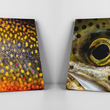
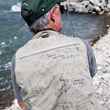
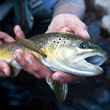



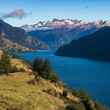
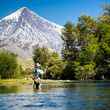




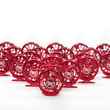



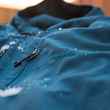
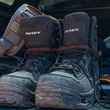



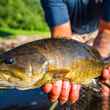
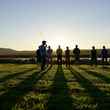
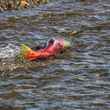
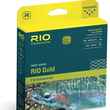
Comments
D McCarty replied on Permalink
Any suggestions on how a first-timer would tackle a self-guided trip? How do you find and access public water to wade? Not wanting the crowds of Yellowstone Park, just want to find goo water to fish and catch some trout.
Todd Tanner replied on Permalink
Hey D McCarty, it all depends on what you're looking for, when you're coming, and what kind of fishing you enjoy. Without knowing any of the above, it's pretty tough to offer advice.
Just for the hell of it, here are two places to consider. Missouri River (near Craig, MT) in June. It's crowded, but there's a ton of water and lots of trout. There are also some awfully nice tributaries that have decent fish and don't get much attention. South Fork of the Snake (near Idaho Falls, Idaho) in July. If the South Fork isn't fishing for some reason, you can make the short drive over to Jackson for the Wyoming rivers, or head up the road to the Henry's Fork, Teton or Fall rivers. There's a ton of great water close by.
If I were you, I'd spend some time searching info on the web, pick a time and a region, and then start calling local fly shops and asking for suggestions. They won't give you their secret spots, but they all want your business in the future so they'll point you in the right direction. Montana is great, because it has excellent stream access. You can jump on any creek or river at a county bridge, and as long as you stay below the high water mark, it's public property. Other states - Colorado, for example - are not nearly so enlightened.
Paul Prosser replied on Permalink
I like your list...I appreciate this kind of info from someone who has used the gear extensively and is not trying to sell me something.
I do have a suggestion about reels. When you find a reel you really like, bite down and purchase an extra spool or three. many reels nowadays are designed to carry a range of line weights, and will maybe reduce your load factor by a few ounces and cubic inches/
One caveat - don't wait too long to grab th e spools...tackle companies are notorious about discontinuing rods and reels after just a season or two, as they've come up with something "improved". Orvis is particularly notorious for this...just try finding a spool in the aftermarket for a reel model they just discontinued a couple years ago.
Thanks for the info!
Thomas Gargano replied on Permalink
I think your article is great and would love to do this trip but i have a few questions if you can answer?
From start to finish, what hotels would i stay at, places to eat along the way, what airports to fly in & fly out of, directions to each river, guides to use along the way or anything else i could use to plan this trip.
Thanks again for all the info so far.
Pages